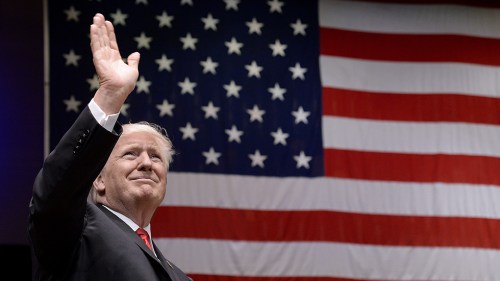Ohio special election could play decisive role in abortion fight
Ohio voters will go to the polls Tuesday to vote on a ballot measure that could raise the threshold for changing the state constitution — and in the process have a direct impact on abortion rights in the battleground state.
The measure, known as Issue 1, would raise the threshold for amending the state constitution from a simple majority to 60 percent of voters. The amendment concerns a procedural process, but the issue has become politically charged in the shadow of a ballot measure set for November that would enshrine abortion protections in the state constitution.
Because of this, the Aug. 8 election is seen as the latest front in the war over abortion rights, as both parties grapple with how to handle the issue heading into next year’s presidential election.
“We are deeply opposed to Issue 1 because it is special interests and corrupt politicians trying to gain more power for themselves and take away Ohioans’ right to one-person, one-vote, to democracy and of course to their ability to vote in November to protect reproductive freedom,” said Lauren Blauvelt, the vice president of government affairs and public advocacy at Planned Parenthood Advocates of Ohio.
Abortion rights proponents have argued that the Aug. 8 measure was designed specifically to make enshrining abortion rights more difficult. On the other hand, advocates for the measure argue that the measure is intended to limit the influence of special interests and lobbyists in amending the constitution. But some have also pointed to it as an opportunity to try to stop what they view as a “radical” abortion amendment.
Ohio Secretary of State Frank LaRose (R) has been among the most vocal proponents of the measure, having put forward the proposal along with a GOP state representative last November. He said at the time that the measure was designed to protect the state constitution from “continued abuse” from special interests and influence from people out of state.
“The Ohio Constitution is supposed to serve as a framework of our state government, not as a tool for special interests,” he said.
But LaRose, who’s running to replace Sen. Sherrod Brown (D) in next year’s closely watched Senate race, stirred controversy with comments he made to supporters in May, when he said the proposal is “100 percent about keeping a radical pro-abortion amendment out of our constitution.”
The Aug. 8 measure would also amend the constitution to require that petitions to have voters weigh in on a possible amendment receive signatures from all 88 of the state’s counties, instead of just half. It would also eliminate a 10-day period that those backing a petition currently have to gather additional signatures if some of their signatures are ruled invalid.
The fight over abortion rights in Ohio, like in other states around the country, was kicked into overdrive after the Supreme Court overturned Roe v. Wade last year. A bill banning abortion after about six weeks of pregnancy, which was signed into law by Gov. Mike DeWine (R) in 2019, went into effect after the ruling, only for it to be temporarily blocked in September.
Blauvelt said she is part of Ohioans for Reproductive Freedom, a coalition of patient advocates, civil rights leaders, activists, medical providers and other state residents that has operated since Roe was overturned. Planned Parenthood was one of the parties that pursued the lawsuit to block the abortion ban.
Blauvelt said the case will likely be decided in the state’s Supreme Court, and the coalition does not expect to win there, based on the current conservative-leaning makeup. She said the group worked to conduct research and gather 700,000 signatures from state residents to put the abortion measure on the November ballot.
Notably, the number of signatures they secured was about 300,000 more than needed.
The November measure would establish a “fundamental right to reproductive freedom” with “reasonable limits” in the state and ensure that “every individual” has the right to make their own reproductive decisions, including on contraception, pregnancy and abortion.
Abortion rights activists argue that LaRose’s comments and the timing of the measure indicate that it’s designed to sink the abortion measure in November. Those on the other side push back against that notion, arguing that the state constitution should require more than just a simple majority that can be too easily subject to outside influence.
Mark Weaver, a Republican strategist whose political consultancy firm has produced some advertisements encouraging Ohioans to vote in favor of the measure Tuesday, said raising the threshold would require members of both parties to come together to amend the constitution instead of the “very low bar” of a simple majority.
“Ohioans know that outside corporate interests have littered our state constitution with their profit-making schemes,” Weaver said.
He pointed to a 2009 constitutional amendment that legalized gambling in Ohio as an example. The amendment narrowly passed with 52 percent of the vote after parties who eventually became the owners and operators of four casinos introduced a petition for the measure.
Weaver said these casinos essentially wrote “guaranteed profits” into the state constitution.
But Jeff Rusnak, an Ohio-based strategist supporting the abortion rights effort, argued that it was in fact special interests that have spurred the effort to raise the threshold for changing the constitution.
Billionaire Richard Uihlein, a major Republican donor, has been among the biggest financial backers of the Aug. 8 measure, donating $4 million to the campaign committee supporting it. The vast majority of financial support for both the “yes” and “no” campaigns have come from out of state.
Rusnak said those supporting the measure Tuesday are “fabricating” an issue that does not exist.
“The issued constitutional amendments are a rarity in the state. They don’t occur as often as they would like, and passing them, frankly, is even more difficult. This has been in place for over 100 years in Ohio, and it’s worked. There’s no reason to change. It’s somewhat convenient now for them to say this,” Rusnak said.
Weaver argued that those advocating for the abortion proposal but opposing the Aug. 8 measure acknowledge that a clear consensus doesn’t exist in Ohio on the “hard-left pro-abortion proposal.”
“If they thought there were 60 percent of Ohioans who would support that radical idea, they wouldn’t be opposing Issue 1,” Weaver said.
Special elections often see lower turnout than general or primary elections, but both sides seem to agree that turnout will likely be higher than normal given the attention that the measure has received.
Weaver said “corporate media” such as the editorial board for The Plain Dealer, Cleveland’s primary newspaper, have denounced Issue 1 and thus given the issue a higher profile and made additional participation likely.
Blauvelt and Rusnak said they have seen a surge in early voting. Rusnak said early ballots have come from urban and suburban areas in particular.
“If you look at the early vote numbers and the interest around this issue, we’re seeing much larger than normal — certainly for a special election — but higher numbers than you would see in an off-year election,” Rusnak said. “There’s tremendous attention around this issue.”
Copyright 2024 Nexstar Media Inc. All rights reserved. This material may not be published, broadcast, rewritten, or redistributed..













